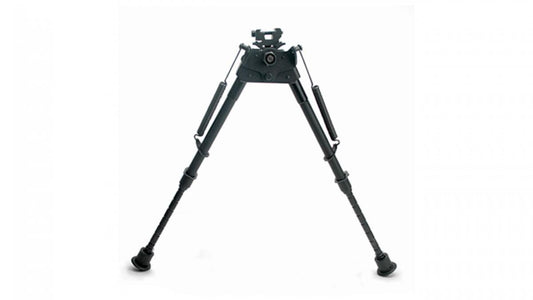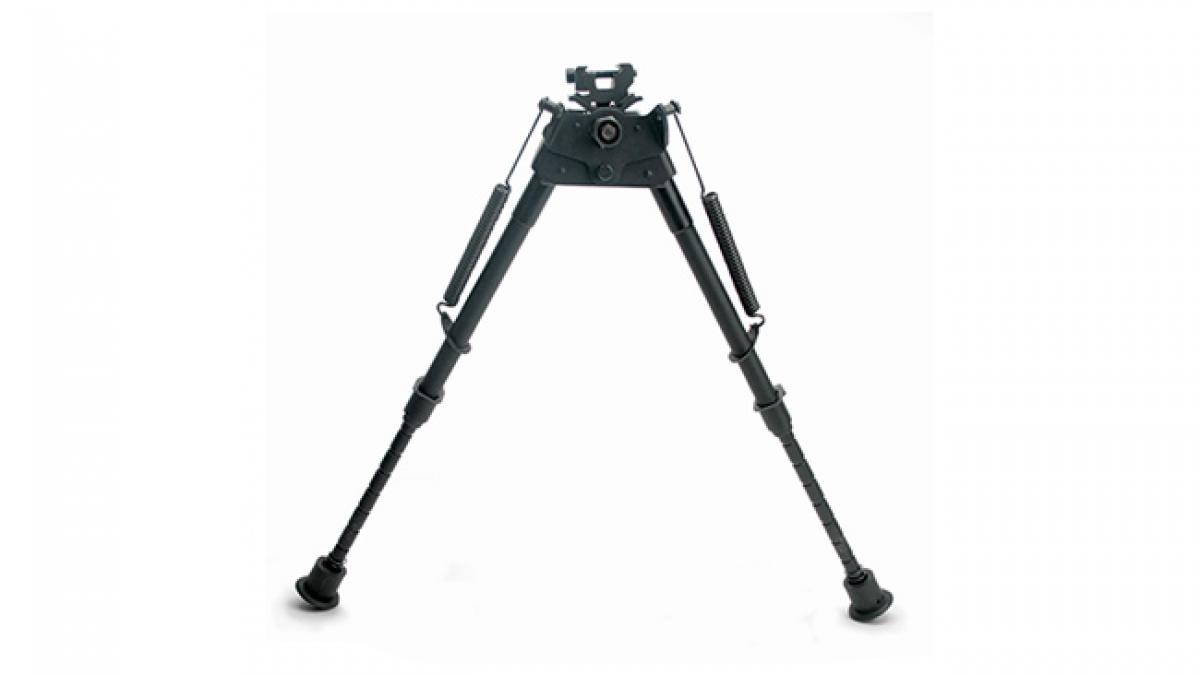

Constructed from durable alloy steel, the Konus Bipod for Hunting & Shooting offers a stable shooting platform for a variety of rifles. Designed to fit Weaver-Picatinny rails, this bipod ensures compatibility with most firearms. Its foldable arms and extendable legs allow for easy adjustment, providing a height range from 6 to 9 inches. Whether you’re on the range or in the field, the rubberized feet improve grip on various surfaces, enhancing stability when you need it most. With a lightweight design of just 12.6 ounces, it's easy to carry without sacrificing performance.
Ideal for both hunting and target shooting, the Konus Bipod combines functionality with a sleek black matte finish. The extendable legs lock securely in place, allowing for quick adjustments to suit your shooting position. Its robust construction ensures long-lasting use, making it a reliable choice for any shooter seeking precision and stability.
Features:
- DURABLE CONSTRUCTION for long-lasting performance in rugged conditions.
- FOLDABLE ARMS for easy transport and storage when not in use.
- EXTENDABLE LEGS allow for height adjustments from 6" to 9", providing versatility.
- RUBBERIZED FEET enhance grip on various surfaces for improved stability.
- WEAVER-PICATINNY COMPATIBLE ensures a secure mount on most rifles.
- LIGHTWEIGHT DESIGN at just 12.6 ounces, making it easy to carry.
- SLEEK BLACK FINISH offers a professional look while reducing glare.
- QUICK INSTALLATION for immediate use without complicated setup.
Technical Specifications
| Attribute | Details |
|---|---|
| Height Range | 6" - 9" (15 - 22 cm) |
| Weight | 12.6 oz (360 g) |
| Material | Alloy Steel |
| Mounting System | Weaver-Picatinny Rail |
| Color | Black Matte Finish |
What's in the Box?
- Konus Bipod
- Mounting Hardware
Customer Reviews
"This bipod is sturdy and lightweight. Perfect for my hunting trips!"
"Adjusts easily and holds my rifle securely. Great addition to my gear!"
"I love how compact it is. Easy to pack and set up."
FAQ
What is the weight capacity of the Konus Bipod? This bipod is designed to support most standard rifles, ensuring stability and performance without compromising safety. Always check your rifle specifications for compatibility.
How do I maintain the bipod? Regularly inspect the legs and mounting system for wear or damage. Clean the rubber feet to maintain grip, and store it in a dry place to prevent rust on the alloy steel material.
How does the Konus Bipod compare to other brands? Many users find that the Konus Bipod offers comparable quality to higher-end models at a more accessible price. Its lightweight design and solid construction make it an excellent choice for both beginners and experienced shooters.
Similar Models
Explore our range of Konus accessories, including the Konus 12-27" Adjustable Bipod for more height options and the Konus 9-13" Tactical Bipod for enhanced stability. Check out the complete collection to find the perfect fit for your shooting needs.
You May Also Like
Here’s some of our most similar products people are buying. Click to discover trending style.






